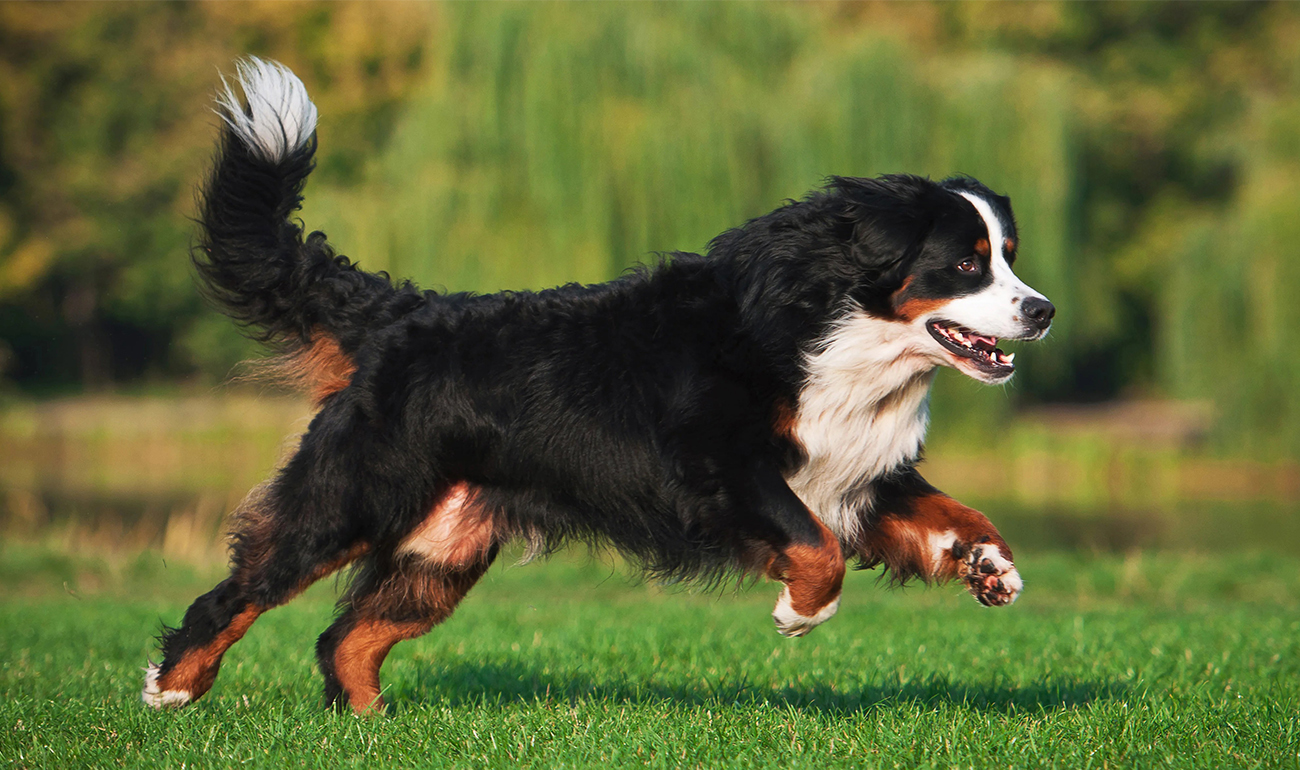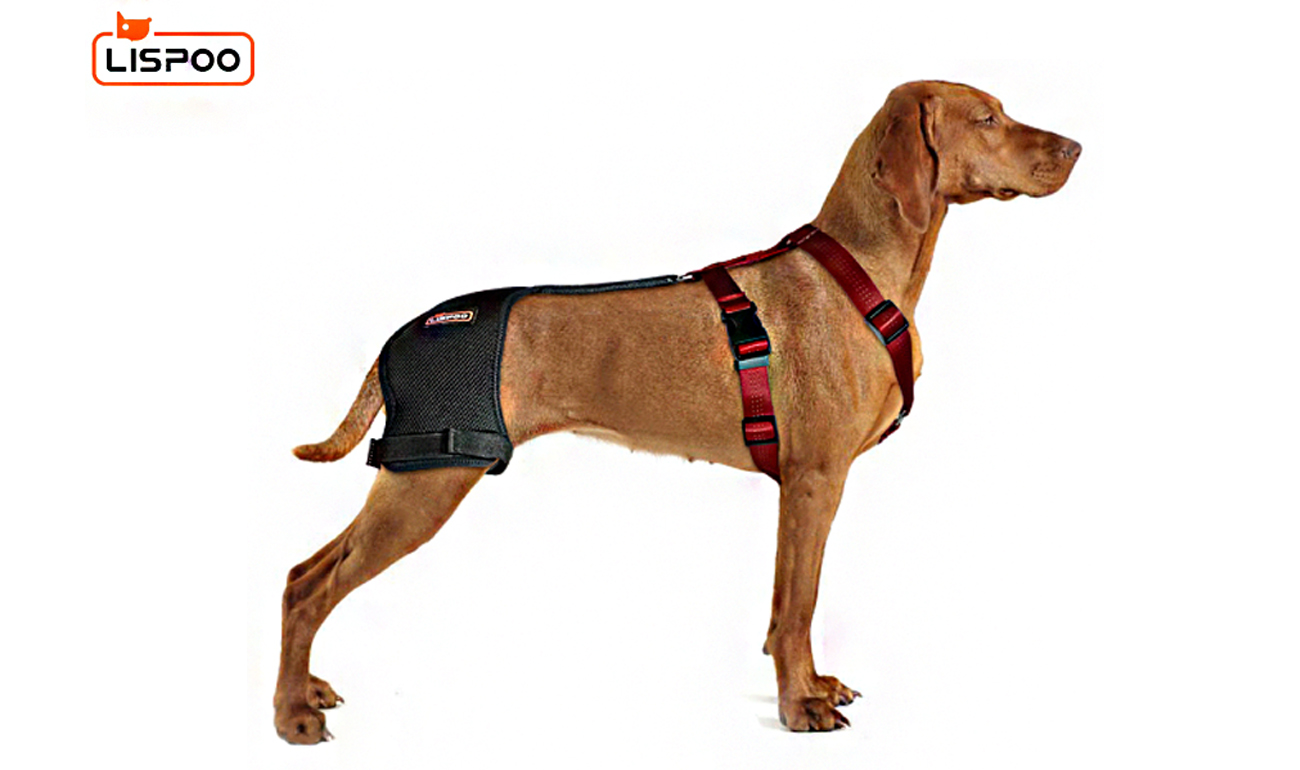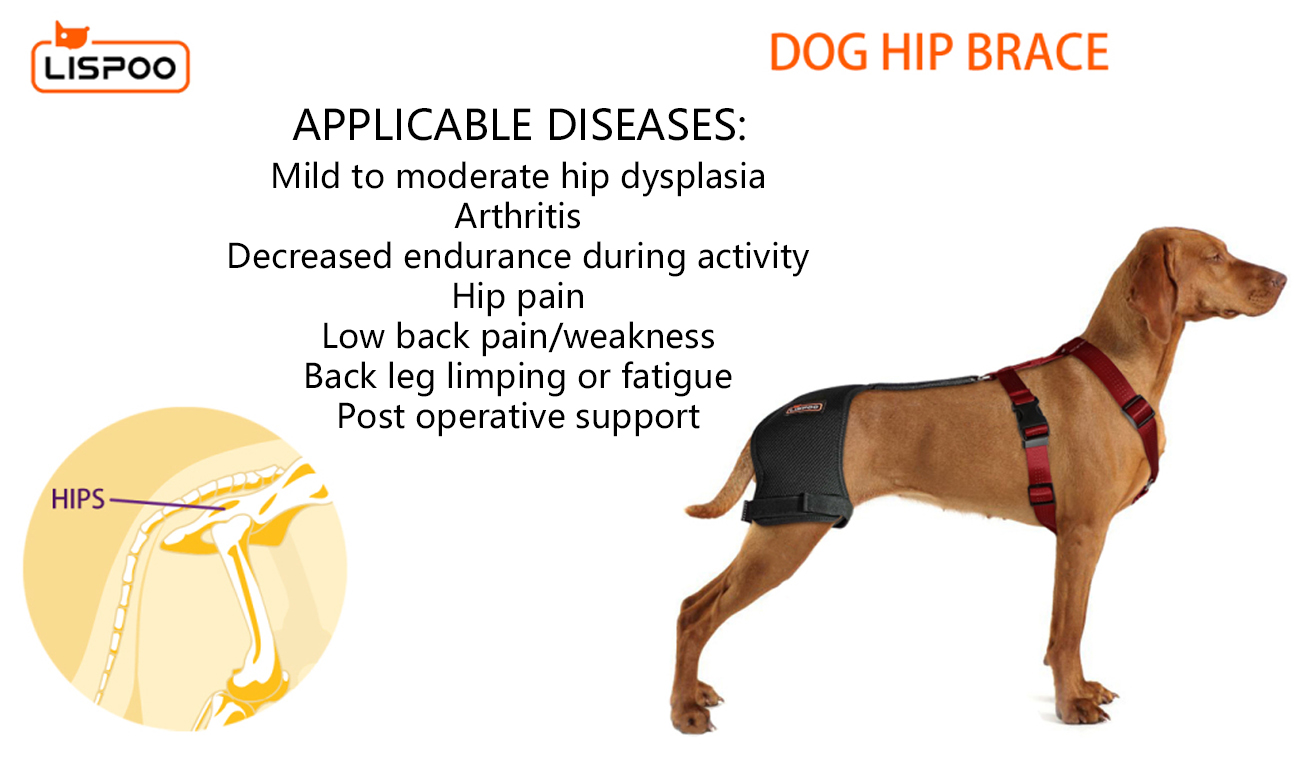Hip dysplasia is a genetic condition that affects dogs, particularly larger breeds such as German Shepherds, Rottweilers, and Great Danes. It is characterized by abnormal growth and development of the hip joint, which can cause joint laxity, pain, and discomfort. Hip dysplasia can lead to arthritis, osteoarthritis, and other joint-related issues.
Symptoms of Hip Dysplasia in Dogs:
The signs and symptoms of hip dysplasia in dogs can vary from mild to severe. Some of the common signs include:
(1)Limping or difficulty in standing up
(2)Pain or discomfort when walking or running
(3)Stiffness in the hind legs
(4)Loss of muscle mass in the hind legs
(5)Difficulty in climbing stairs or jumping
(6)Reluctance to engage in physical activity
If you notice any of these symptoms in your dog, it is important to take them to a veterinarian for a proper diagnosis.
Treatment for Hip Dysplasia in Dogs:
There are various treatments available for dogs with hip dysplasia, including:
1、Medications: Nonsteroidal anti-inflammatory drugs (NSAIDs) can help reduce pain and inflammation in dogs with hip dysplasia.
2、Weight Management: Overweight dogs are at a higher risk of hip dysplasia. Therefore, maintaining a healthy weight through a balanced diet and regular exercise can help prevent and manage the condition.
3、Physical Therapy: Physical therapy, such as hydrotherapy, can help improve muscle strength and range of motion in dogs with hip dysplasia.
4、Surgery: In severe cases, surgery may be required to correct the abnormal hip joint. However, surgery is often expensive and carries some risks.
5、Dog Hip Dysplasia Brace: A dog hip dysplasia brace is a non-invasive treatment option that can help alleviate pain and improve mobility in dogs with hip dysplasia.
What is a Dog Hip Dysplasia Brace?
A dog hip dysplasia brace, also known as a hip support or a hip brace, is a device designed to provide support and stability to the hip joint. It is made of soft, breathable fabric and has adjustable straps that allow it to fit snugly around the dog's hips. The brace works by reducing the load on the affected hip joint and distributing the weight evenly, which can help alleviate pain and discomfort.
How Does a Dog Hip Dysplasia Brace Work?
A dog hip dysplasia brace works by providing support and stability to the hip joint. It does this by reducing the load on the affected hip joint and distributing the weight evenly. This can help alleviate pain and discomfort and improve mobility in dogs with hip dysplasia.
The brace fits snugly around the dog's hips and has adjustable straps that allow it to be customized for the dog's size and shape. The brace is made of soft, breathable fabric, which is comfortable for the dog to wear for extended periods.
Benefits of Using a Dog Hip Dysplasia Brace:
There are several benefits to using a dog hip dysplasia brace, including:
1、Pain Relief: A dog hip dysplasia brace can help reduce pain and discomfort in dogs with hip dysplasia by providing support and stability to the affected joint.
2、Improved Mobility: The brace can improve a dog's mobility by reducing the load on the affected hip joint and distributing weight evenly. This can help dogs walk and run more comfortably and with less difficulty.
3、Non-Invasive Treatment: A dog hip dysplasia brace is a non-invasive treatment option that does not require surgery or medication. It is a safe and natural way to manage hip dysplasia in dogs.
4、Affordable: Compared to surgery or other invasive treatments, a dog hip dysplasia brace is relatively affordable. It is a cost-effective way to manage hip dysplasia in dogs.
Types of Dog Hip Dysplasia Brace:
There are several types of dog hip dysplasia brace available, including:
1、Supportive Hip Harness: A supportive hip harness is a type of dog hip dysplasia brace that provides support and stability to the hip joint. It is made of soft, breathable fabric and has adjustable straps that allow it to fit snugly around the dog's hips. The harness works by reducing the load on the affected hip joint and distributing weight evenly.
2、Hip Orthosis: A hip orthosis is a type of dog hip dysplasia brace that is designed to limit hip movement. It is made of rigid material and has a hinge that allows the dog to move its leg forward and backward but limits sideways movement. This type of brace is recommended for dogs with severe hip dysplasia.
3、Custom-Made Hip Brace: A custom-made hip brace is a type of dog hip dysplasia brace that is tailored to the dog's specific measurements and needs. It is made of soft, breathable fabric and has adjustable straps that allow it to fit snugly around the dog's hips. A custom-made hip brace provides maximum support and stability to the hip joint.
How to Choose the Right Dog Hip Dysplasia Brace:
When choosing a dog hip dysplasia brace, there are several factors to consider, including:
1、Size: It is important to choose a brace that fits your dog properly. The brace should be snug but not too tight, and it should not restrict the dog's movement.
2、Material: The material of the brace should be soft, breathable, and comfortable for the dog to wear for extended periods.
3、Adjustability: The brace should have adjustable straps that allow it to be customized to your dog's size and shape.
4、Type of Brace: The type of brace you choose will depend on the severity of your dog's hip dysplasia. A supportive hip harness is suitable for mild to moderate cases, while a hip orthosis or custom-made hip brace is recommended for severe cases.
5、Brand: Choose a reputable brand that has a proven track record of producing high-quality dog hip dysplasia braces.
How to Use a Dog Hip Dysplasia Brace:
Using a dog hip dysplasia brace is easy, and most braces come with instructions on how to use them. Here are some general steps to follow:
1、Put the brace on your dog: Start by putting the brace on your dog, ensuring that it fits snugly but not too tight. Adjust the straps as needed.
2、Let your dog get used to the brace: Give your dog some time to get used to the brace before going on a walk or engaging in physical activity.
3、Use the brace during physical activity: Use the brace during physical activity, such as walking or running, to provide support and stability to the hip joint.
4、Remove the brace when not in use: Remove the brace when your dog is resting or sleeping. The brace is designed to be worn during physical activity only and should not be left on your dog for extended periods.
5、Clean the brace regularly: It is important to clean the brace regularly to prevent the buildup of bacteria and other contaminants. Follow the manufacturer's instructions for cleaning the brace.
Risks and Precautions:
While a dog hip dysplasia brace is generally safe and non-invasive, there are some risks and precautions to consider, including:
1、Skin Irritation: Some dogs may develop skin irritation or sores from wearing the brace for extended periods. To prevent this, it is important to ensure that the brace fits properly and is not too tight.
2、Discomfort: Some dogs may feel uncomfortable wearing a brace, especially if they are not used to it. It is important to give your dog some time to get used to the brace and to use positive reinforcement to encourage them to wear it.
3、Limitations: A dog hip dysplasia brace can help manage hip dysplasia, but it does not cure the condition. It is important to continue to monitor your dog's condition and work with your veterinarian to develop a comprehensive treatment plan.
4、Not Suitable for All Dogs: A dog hip dysplasia brace is not suitable for all dogs, especially those with other medical conditions or mobility issues. It is important to consult with your veterinarian before using a dog hip dysplasia brace.
Conclusion:
Hip dysplasia is a common condition in dogs that can cause pain, discomfort, and mobility issues. While there is no cure for hip dysplasia, there are several treatment options available, including a dog hip dysplasia brace. A dog hip dysplasia brace can help manage hip dysplasia by providing support and stability to the affected hip joint. It is a non-invasive, affordable, and effective treatment option that can improve a dog's quality of life. When choosing a dog hip dysplasia brace, it is important to consider factors such as size, material, adjustability, type of brace, and brand. By following the manufacturer's instructions and working closely with your veterinarian, you can help your dog manage hip dysplasia and enjoy a happier, more active life.
Product link: LISPOO Dog Hip Brace for Hip Dysplasia
Category link: Knee Brace For Dogs







0 Comments